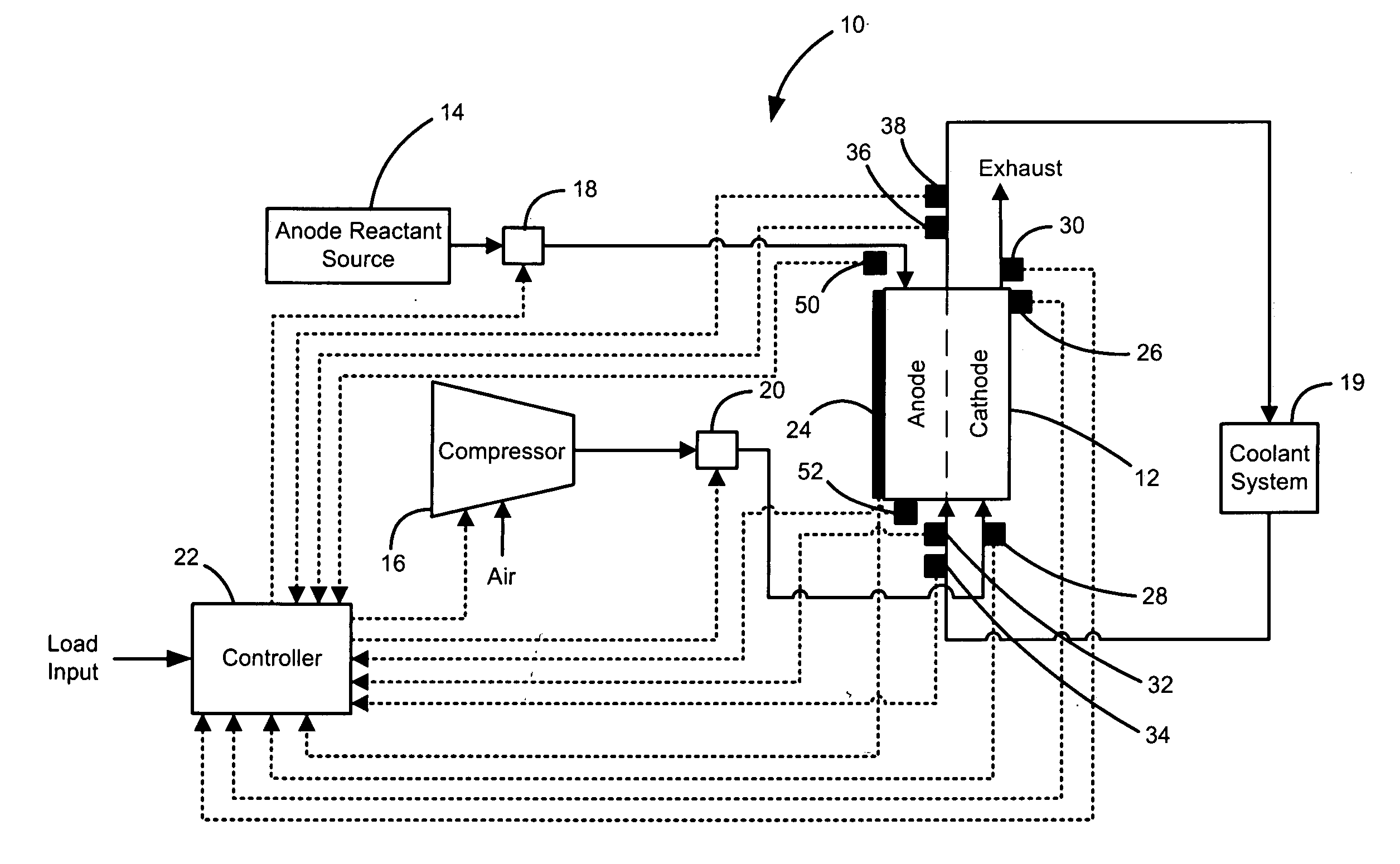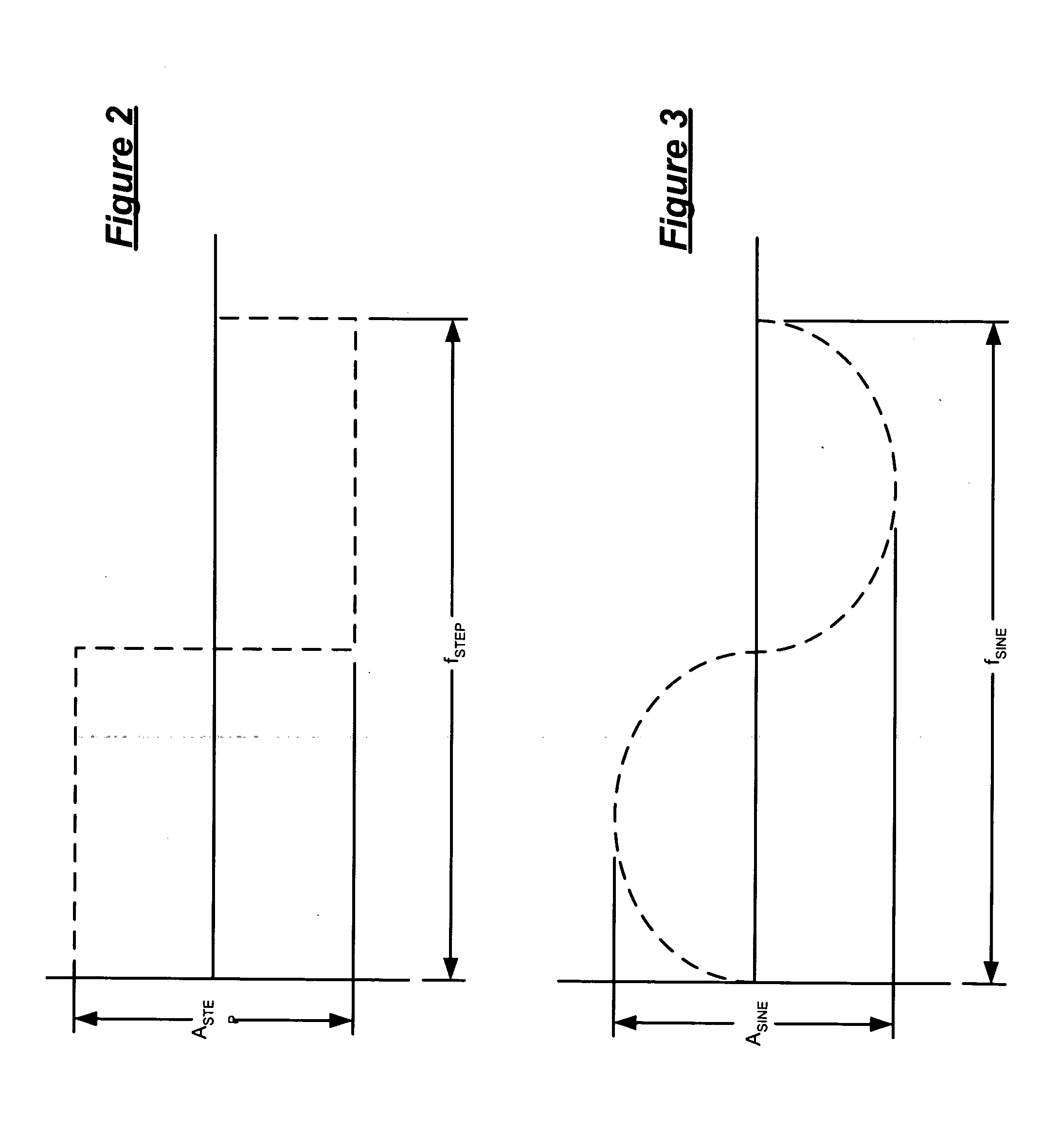Fluid flow pulsing for increased stability in PEM fuel cell
a technology of pem fuel cell and fluid flow, which is applied in the field of fuel cells, can solve the problems of reducing system efficiency, inability to operate the fuel cell stack, and waste of high-grade reactants, and achieves the effects of increasing the efficiency of the system
- Summary
- Abstract
- Description
- Claims
- Application Information
AI Technical Summary
Benefits of technology
Problems solved by technology
Method used
Image
Examples
Embodiment Construction
[0025] The following description of the preferred embodiments is merely exemplary in nature and is in no way intended to limit the invention, its application, or uses.
[0026] Referring now to FIG. 1, an exemplary fuel cell system 10 is illustrated. The fuel cell system 10 includes a fuel cell stack 12 that process reactants to generate electricity. More specifically, the fuel cell stack 12 includes an anode side through which an anode reactant flows and a cathode side through which a cathode reactant flows. The anode reactant is supplied by an anode reactant source 14 and generally includes hydrogen or a hydrogen-rich reformate. The cathode reactant is generally provided as oxygen-rich air supplied by a compressor 16. An anode control device (FCD) 18, such as a regulator, regulates anode reactant flow to the fuel cell stack 12. A cathode FCD 20, such as a regulator, regulates cathode reactant flow to the fuel cell stack 12. The anode and cathode reactant fluids flow through the fuel...
PUM
| Property | Measurement | Unit |
|---|---|---|
| average cell voltage | aaaaa | aaaaa |
| voltages | aaaaa | aaaaa |
| voltages | aaaaa | aaaaa |
Abstract
Description
Claims
Application Information
 Login to View More
Login to View More - R&D
- Intellectual Property
- Life Sciences
- Materials
- Tech Scout
- Unparalleled Data Quality
- Higher Quality Content
- 60% Fewer Hallucinations
Browse by: Latest US Patents, China's latest patents, Technical Efficacy Thesaurus, Application Domain, Technology Topic, Popular Technical Reports.
© 2025 PatSnap. All rights reserved.Legal|Privacy policy|Modern Slavery Act Transparency Statement|Sitemap|About US| Contact US: help@patsnap.com



